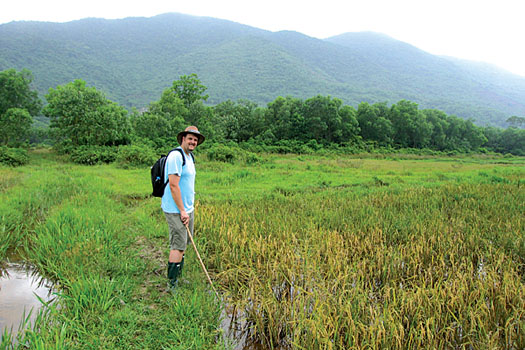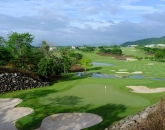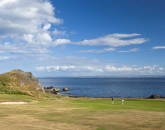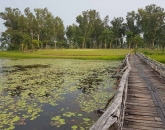
From an early age I’ve had the fortune (or perhaps misfortune) of coming in close contact with a variety of different arachnids and creatures of the reptilian sort. In particular I have encountered, in the wild, a variety of snakes stretching from the harmless to the particularly dangerous. I have never once felt threatened by them although there has been the odd occasion where I have had to jump for the sky to try and avoid them. As a golf architect and having walked countless golf sites across the world - often before any construction has begun - it’s almost a given that I will encounter a multitude of different creepy crawlies and slithery folk. Some of these encounters have been more memorable than others and at times the thought of a deadly encounter is worse than the encounter itself.
Let me share some of my stories to date.
A few years ago I visited a wonderful site in a stunning part of Mpumalanga near Nelspruit / White River in South Africa. I remember walking through thick brush, grass and trees with the client’s representative and the project land planner. When we had made it to the halfway point – with cuts and grazes to show for it – we decided to rest. It was at this time that I was told how the area had the highest concentration of black mambas anywhere in the world so to keep vigilant. If you don’t know already the black mamba can be found on the ground as well as in the trees - to go with the fact that they are the quickest of all the snakes. Needless to say I took twice as long to review the second half of the site and thankfully we never did see anything.
This was in stark contrast to the site I visited in the Eastern Cape - about an hour and a half drive north of the coastal city of Port Elizabeth. The site itself was bounded by coastal thicket and the land was predominately cattle-farmed and covered with Kikuyu grass up to my knees (and I am six-foot--three). We had quad bikes to get around the property but on more than one occasion I wished to walk some of it by foot. At one time I remember walking close to the coastal thicket and seeing a five-foot black snake encircling a mole hole. I looked away for a minute and when I looked again it had disappeared in the thick grass which I had to walk through. I walked a few yards further and I saw another snake motor into the thick brush. I now had about 200 yards to get back to the track - where my quad bike was stationed - and you can bet this was an uncomfortable walk. When we started to stake the site with the surveyors I wondered why they were doing this using their vehicle rather than walk it which is the usual practice. Their reply still gives me the chills today: “This area is teaming with dangerous snakes including the puff adder and green mamba and we did not feel like getting bitten.”
I have visited India twice. I really enjoy the country, the people, the food and the colours. One time I spent two days exploring a potential golf site in the foothills just outside the city of Pune. It was a beautiful site characterised by rocks, waterfalls and thick vegetation. There just so happened to be a small village bounding the site that was named after the local snake, of which there was an abundance. The first evening I was told a Russell’s viper had made camp in the restaurant for a while the night before which left me feeling very uneasy. The Russell’s viper is the most deadly snake around and it kills more people than any other snake. Simply put, I had a restless sleep that night.
Pages
Click here to see the published article.











